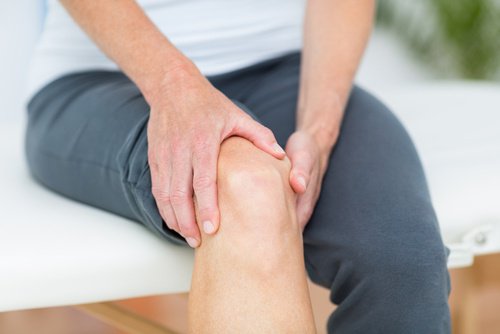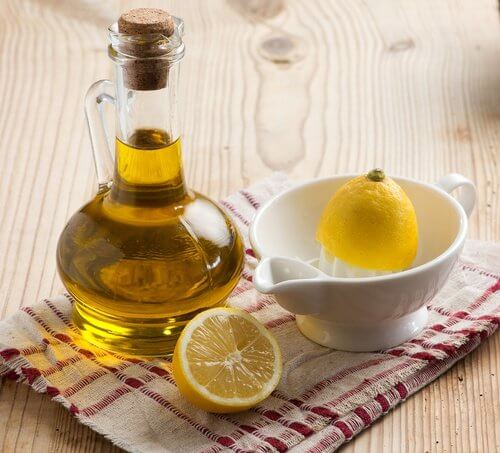How To Use Lemon Peel for Joint Pain


Reviewed and approved by Doctor Carlos Fabián Avila
Lemon is a citrus fruit that has been prized since ancient times for its culinary uses, cosmetics, and above all, for medicinal use. It also has hundreds of other uses and in this article we show you how to use lemon peel for joint pain, either directly or in an infusion.
Lemon peel has an extremely high vitamin C content, and also contains antioxidant components, minerals and essential oils.
It is now proven that it has the power to strengthen the immune system and contribute to the treatment of illnesses such as the flu, colds and bacterial infections. It’s also a member of the alkali food group, which act as diuretics and cleansing agents.
Nevertheless, in spite of being eaten in practically the whole world, most people tend to discard the part that has the best properties: the peel. Even though it does not have a flavor as adaptable as the pulp of the lemon, it’s been found to have 10 times the amount of vitamin C. It also has anti-inflammatory substances that can be useful in the treatment of joint pain.
Read more: 8 Symptoms of a Vitamin C Deficiency
Benefits of lemon peel for joint pain

The sour flavor that is concentrated in the lemon peel has been one of the reasons that almost everyone prefers to discard it after extracting the juice. On the other hand, there are people who save it because they’ve realized that it’s one of the main sources of nutrients that the fruit contains.
You can obtain essential oil of citronella, phellandrene, vitamin C and natural fiber such as pectin. It also contains organic acids, such as citric acid, malic acid and formic acid. On the other hand, its volatile acids work as an anti-inflammatory and a relaxant that contribute to lessening pain in the joints.
This, together with its high content of vitamins A and C, can help to control arthritis and reduces the risk of premature deterioration of joints. In addition to that, it is also a source of calcium, potassium and iron, three types of minerals that strengthen the bones, muscles and joints.
Curing joint pain with lemon peel

To reap the benefits of lemon peel for joint pain, follow our lemon peel remedy which will help to alleviate pain in the joints. It is made with a combination of lemon peel with extra virgin olive oil and eucalyptus leaves. It is a very effective therapy and in a short time it should help to improve the symptoms associated with joint pain and inflammation.
Ingredients
- 1 cup of extra virgin olive oil
- 2 large lemons
- 5 eucalyptus leaves
- One glass bottle or jar with a lid
- 2 clean gauze bandages
- Plastic wrap, such as Saran wrap
Instructions
- First, peel two large lemons, chop up the rind and put it into the jar with the lid on
- Next add the olive oil and be sure that you are covering the rinds completely
- After that, cut the eucalyptus leaves in several pieces and add them to the mixture
- Finally, cover the jar tightly and put it in a cool dark place for two weeks
- After the recommended time, filter it with a cloth and apply
How to use
- Dip a gauze bandage in the mixture and apply to the painful area
- Next cover the bandage with the plastic wrap and woolen scarf
- Keep it in place through the night
- Repeat this treatment at least three times a week
Lemon peel tea

Now we’re going to show you how to use lemon peel for joint pain with an infusion. This regulates the pH of the blood and minimizes the inflammatory processes that increase pain.
As well as this, it is beneficial for difficult digestive problems, circulatory problems and headaches.
See also:
Ingredients
- 1 quart of water
- 2 unpeeled lemons
- 1 tsp. of honey (optional)
What to do
- Extract the juice of 2 lemons
- Pour the water in a pan with the lemon pieces and boil at medium heat
- Let it boil for 10 minutes, then remove from the heat and add the juice
- Sweeten with one teaspoon of honey and drink on an empty stomach
- Repeat this twice a day
So, why not start to take advantage of the benefits of lemon peel and discover a great solution to your pain? If after a few weeks of treatment the pain persists, however, you should consult your doctor immediately.
All cited sources were thoroughly reviewed by our team to ensure their quality, reliability, currency, and validity. The bibliography of this article was considered reliable and of academic or scientific accuracy.
- Góngora-García, L. H., Rosales-García, C. M., González-Fuentes, I., & Pujals-Victoria, N. (2003). Articulación de la rodilla y su mecánica articular. MEDISAN. https://doi.org/DOI: 10.1016/0167-6105(95)00021-6
- Suárez-Sanabria, N., & Osorio-Patiño, A. M. (2013). Biomecánica del hombro y bases fisiológicas de los ejercicios de Codman. Rev CES Med. https://doi.org/10.21615/ces med.v27i2.2190
- Quijano, Y. (2011). Anatomía clínica de la articulación temporomandibular (ATM). Morfolia.
- Miranda, E., Muñoz, S., & Paolinelli, P. (2010). Estudio De Imágenes De Articulación Patelofemoral : ¿ En Qué Estamos ? Revista Chilena de Radiología. https://doi.org/10.4067/S0717-93082010000300003
This text is provided for informational purposes only and does not replace consultation with a professional. If in doubt, consult your specialist.








